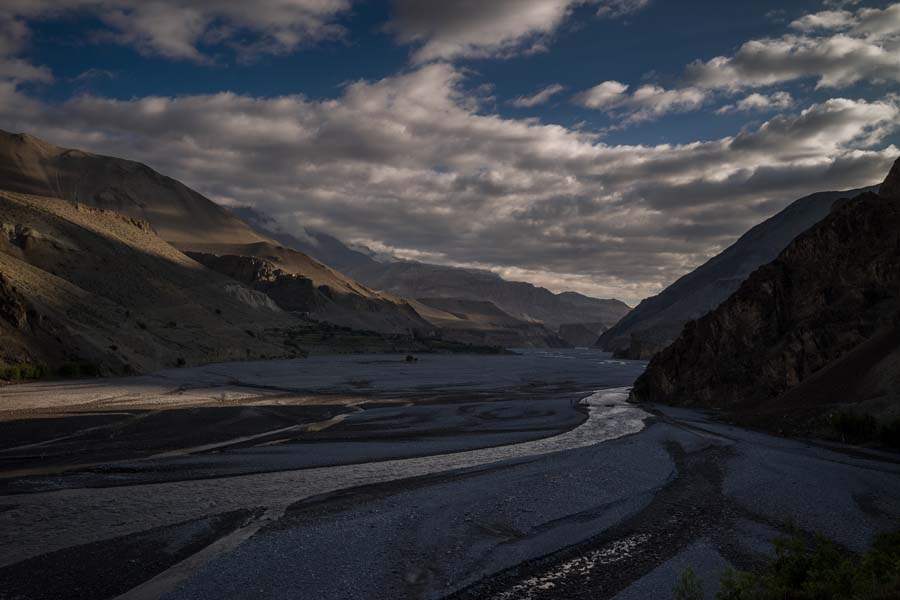
Being Here Now
The Art & Practice of Travel PhotographyTM

Lo Monthang
Upper Mustang, Nepal
Adventure Travel & Photography Trip
May 5 – 21, 2023
(the festival is Lunar dependent so dates vary)
circa 17 Days
|
Photography "has little to do with the things you see Skill & Physical Level: MODERATELY ACTIVE to STRENUOUS hiking skills with a good level of fitness required; no technical difficulties, but an ability to walk around, when acclimated, in altitudes between about 2743 meters /9000 feet up to 4135 meters /13,566 feet. (If you are adding the Manang horse trek via Thorong La Pass you will need to go much higher: 17,769 feet /5416 meters.) Our tours and workshops are open to photographers who desire to hone their skills in capturing content and developing a style – all in the beautiful and mysterious environs of Cuba, Mongolia, Venice, Santa Fe, Mustang, Papua New Guinea, Scotland and East & Southern Africa – preferably (but not required) using a digital camera suited to the classic image-making activity in which we engage: travel and street photography/ portraiture, documentary work, an occasional landscape and the ability to lend 'presence' to static objects like buildings and monuments. Just as Buddhism attempts to get one to live in the present, in the now (as that is all we really have), your picture-making will begin to focus on the image you have in front of you at right at this given moment. The idea is to make the best, most interesting photograph you can with this one chance. Digital has made many of us move this idea to the rear of our consciousness: we know we have hundreds of images to freely burn, forgetting it is this one, right now that is the most important image we will ever make – at least until we approach the next image! Take your time and concentration with this photo. Happiness does not come from doing easy work but from the afterglow of satisfaction that comes after the achievement of a difficult task that demanded our best. – Theodore Isaac Rubin
The Details
Buy experiences instead of things. |
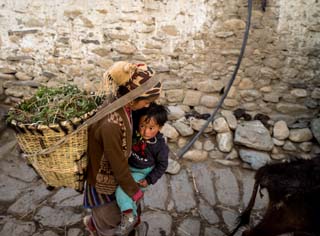 Tour Cost
Tour Cost Total cost for the photo tour is US$4995 per person, double occupancy. (Note: If we have only 4 participants the price will increase a bit as much of our total cost is fixed regardless of our numbers.) In Kathmandu and Pokhara (if required by flight conditions) we stay in really great hotels. The hotel in Jomsom is simple but adequate. Traveling up the road to Lo Manthang we stay at Teahouses made to accommodate tourists. These range from spartan to spartan minus! Our meals are taken in these establishments, too. These lodgings are expensive by Mustang standards (and are included in your Tour price) but are the only recourse except for tent camping.
Your tour price includes and pays for: Upper Mustang Restricted Area Permit, $500 (1 or 2 passport photos required) ACAP Permit, $?? (1 passport photo & 1 passport Main Page copy required) Double rooms for every night (Single, if I can get a good rate). Drivers for each SUV and our Guides/Porters plus their Medical & Life Insurance Almost all breakfasts, lunches & dinners. (ca. 43 of 49 meals are included) Airfare Kathmandu-Pokhara-Jomsom & Return Transfers to/from Kathmandu-Pokhara-Jomsom and our lodgings Group SUV transport for Tour activities that need it 3-Day Tiji Festival Event & Still Photography Pass Entrance fees for most sites we visit Some years horse transport for part of the journey up the Kali Gandaki is available for those who would like to switch from SUV to horses for a day or two Sight visits in Kathmandu and surrounding villages Pre-Tour instructions to prepare you for Nepal and Upper Mustang (as well as dozens of photography books & articles on a USB drive) Essentially, we include all accommodations, most meals every day with drinks, flights inside Nepal, SUV transport with local driver, and a guide. US$50 of every participant's fee is donated to Mustang's Lo Gyalpo Jigme Foundation for Cultural Conservation. NOT included in your tour cost is: – your airfare to Kathmandu from your home base* – Nepal multiple-entry visa (US$50 cash! for 30 days) – airport-related taxes – baggage charges as well as excess weight fees – meals in Kathmandu before & after the tour – drinks (after the first, included, one) during meals – alcoholic drinks – personal outings and entertainment and incidentals (music/dance, gifts, etc.) – some monastery admissions – medical
expenses incurred before, on, or after the Tour** – expenses arising from situations beyond our control. These include flight cancellations, road closures, landslides, mechanical breakdowns, weather events, etc. – money exchanging fees – travel insurance – medical, & evacuation insurance - REQUIRED! – any optional activites not required by the Tour – a single room with en suite bath (may be available for extra cost in the cities & Lo Manthang, probably not in the Upper Mustang villages) – tips for meals, guide services and monastery services – a possible 10% increased trip cost if we have 4 or 5 people instead of 6 participants. – While this reads as a long list the actual amount of money is quite small - unless you splurge on fancy meals and alcohol. NOTE: We recommend you limit your alcohol consumption in the high altitude areas we are visiting. Consider yourself to have been warned! – Do ask about any other items if you have questions. * You must arrive in Kathmandu at least ONE day before we head out to the Mustang region. NO exceptions! Arrival two days before is better in case your flights are delayed or there are unanticipated problems in your journey. As well, Kathmandu offers lots to see and photograph! ** Your regular U.S. medical insurance policy may cover you in Nepal if the policy is a global policy. Do check to find out whether this is the case with your medical policy. If you are not covered we have suggestions for good options for our participants as medical AND Med-E-Vac insurance is a requirement for your participation in this tour. |
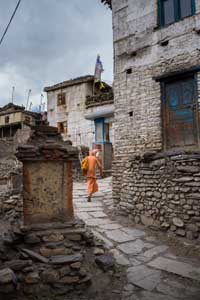 Payments & Refunds, Cancellations
Payments & Refunds, Cancellations Within 7 days after you make your reservation (by telephone, email, facsimile or other means) we require an Initial Payment of $1000 per person to hold your place for the Tour. We will send you an invoice for this Initial Payment and then one afterward that includes the payment and your balance due, with the sequence of due dates for your other payments. The final payment for your place in the Tour will be due in full 90 days before the start of the Tour. Your place in the Tour may be cancelled without notice if you have not paid any fees upon their due date. If you find you cannot go on the Tour after you have made a reservation/payments to us, you can cancel your participation. To do this you must notify us in writing. An initial email and/or a telephone call concerning your intent to cancel will also be helpful as this is a small group endeavor and your cancellation will affect the whole Tour. Please read this page carefully as it describes our Cancellation Refund policy in full. |
|
Below is a list of the photographers/guides who will be leading this trip. Both have many years of experience as photographers and adventure travelers in Mustang and other remote areas of the world. Go to this page to see their work.
Wilbur Norman is a Santa Fe writer and photographer who studied social anthropology and has owned rare book and tribal art galleries. His first camera was his father's bakelite 120/220 Ansco Panda but has ‘upgraded’ over the years to his current image-making tools: the Leica M11, Leica M10R, Sony A1 and several Fuji X-cameras; kit chosen for the beautiful rendering produced by their companion lenses. He still owns and uses his first great camera, a Leica M4 Black Paint film body purchased when he was 16 years old.
Tsewang Jonden Bista is the nephew of the Late King of Mustang and was born in the village of Charang, Mustang. He is a tourism entrepreneur and social worker and conducts specialized tours in his homeland. He has been working in Mustang for the last 26 years and has in-depth knowledge of its locales, customs and practices. He has worked with The National Geographic, Discovery Channel and WGBH USA. He is also a founding member of the non-governmental organization (NGO) called Lo Gyalpo Jigme Foundation for Cultural Conservation, working in Upper Mustang to uplift the life of the Loba people and conserve the rich cultural heritage of his ancestors. He authored a booklet in collaboration with UNESCO on the important and famous Tiji festival of Mustang.
Pema Sherpa is our fantastic guide and cook. Most everyone has heard about the incredible warmth, cheer, initiative and strength of Nepal's sherpas upon whom expeditions depend. Pema is an exemplar of these heroes of the Himalaya. Pema knows every nook and cranny of Upper Mustang and is friends with the royal family. He also knows what Westerners need in terms of dietary hygiene and fills in as cook; not a single person has ever gotten sick from food on our trips when traveling with Pema and his watchful eye. As if guide and cook are not enough he also fills in as Wilbur's camera sherpa; a useful helpmate for switching lenses and bodies. Four hands good, two hands not as good!
We are often fortunate to have the company and advice of Luigi Fieni. Luigi has many awards and publications to his credit. He has worked in Upper Mustang for over 20 seasons training local artists in the conservation, restoration and preservation of ancient monastery paintings found throughout the kingdom. His knowledge and good cheer are always a plus. Happiness does not come from doing easy work but from the afterglow of satisfaction that comes after the achievement of a difficult task that demanded our best. – Theodore Isaac Rubin |
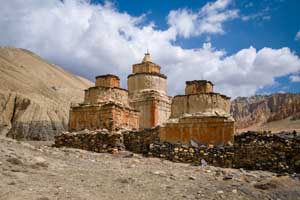 Events Subject to Change
Events Subject to ChangeMuch in Nepal is, at all times, in flux. While we make every effort to stick to the schedule of the day, things can happen to make improvisations with comparable alternatives necessary. Come prepared for the delightfully unexpected and serendipitous. The flexible – and prepared – traveler takes such events in stride and makes the most of any opportunity. As we will be a small group, activities may be amended with the consensus of participants. |
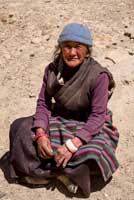 Photo Release / Tour Review
Photo Release / Tour Review Camera Treks may ask you to submit a few of your photographs from the Tour to use on its web site or in promotional/publicity materials. We will always give attribution for your photographs if and when we use them! We will ask you to submit a brief blurb on your opinion of the Tour to use on our web site or in promotional/publicity materials. Also, after your return home, we will ask you to fill out a brief questionnaire rating us and the trip – both the positive and the negative. |
|